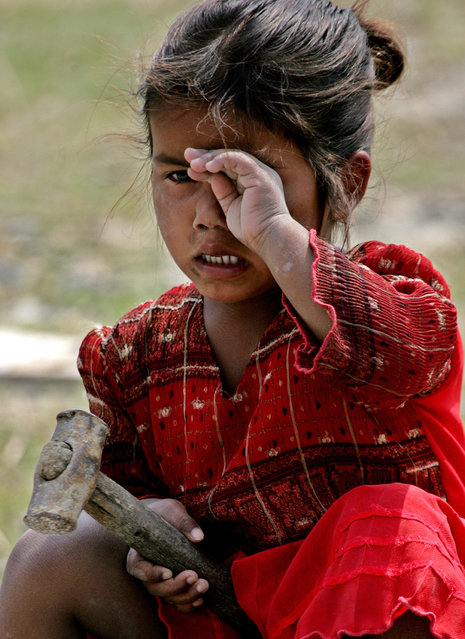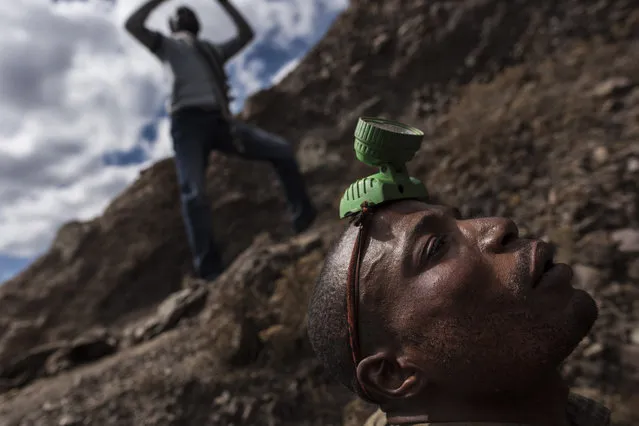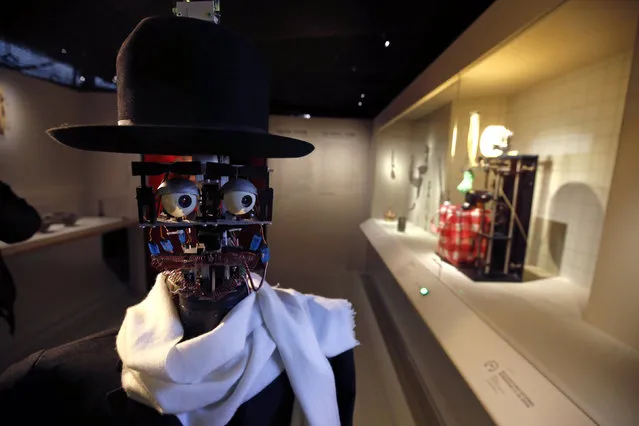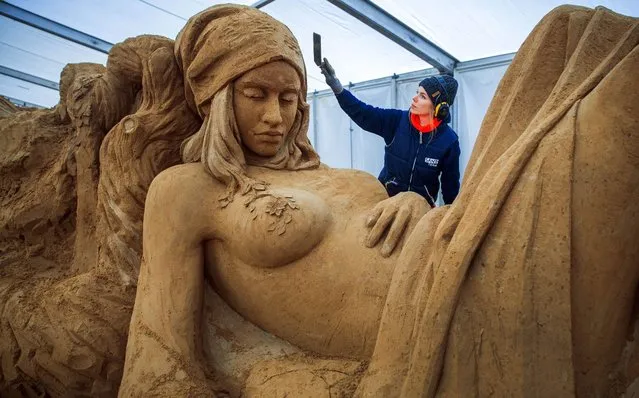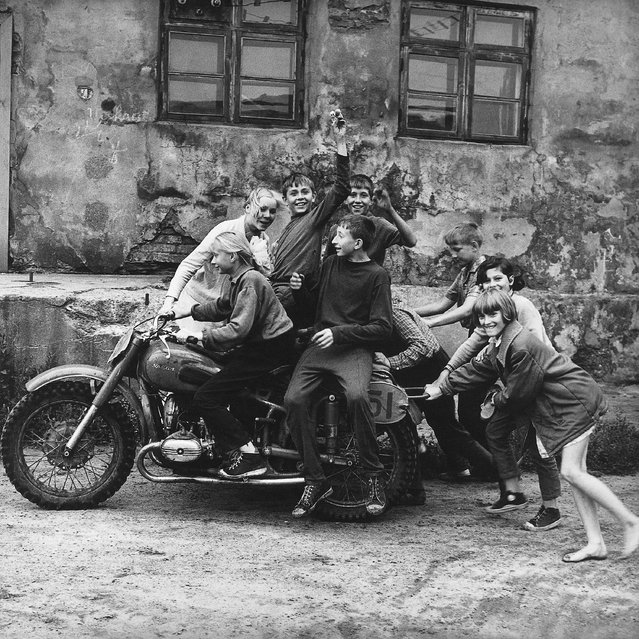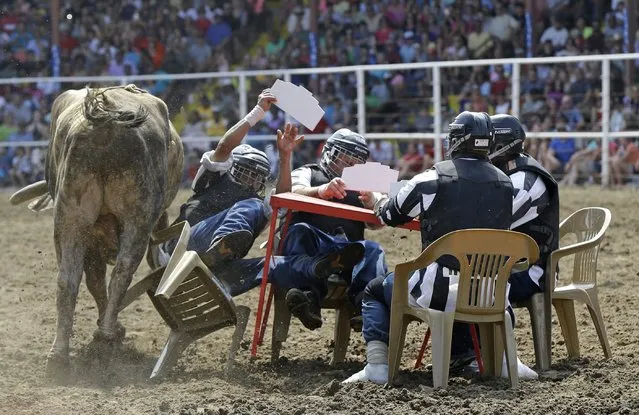
A bull rams inmates seated at a card table in the Convict Poker event at the Angola Prison Rodeo in Angola, La., Saturday, April 26, 2014. Those competing in the rodeo have to pass a physical to be deemed strong and healthy enough, and thousands of others work year-round making arts and crafts to sell at the event, according to the prison's athletic director. (Photo by Gerald Herbert/AP Photo)
28 Apr 2014 08:34:00,post received
0 comments

